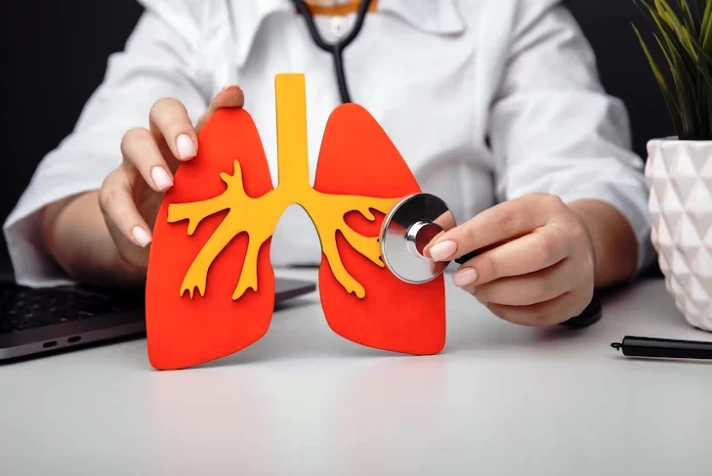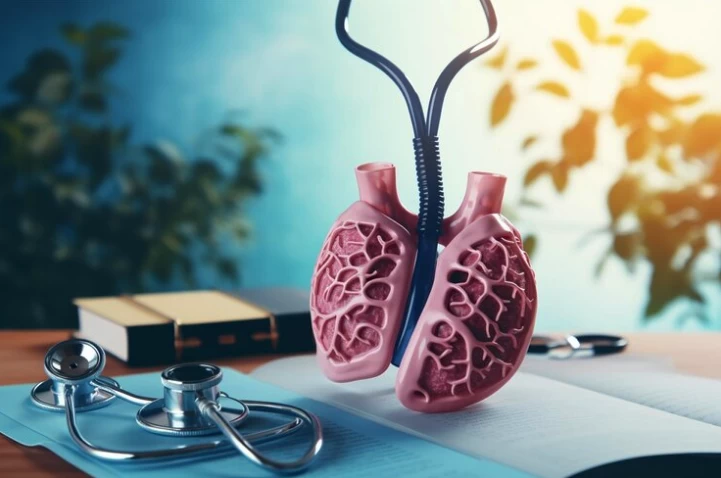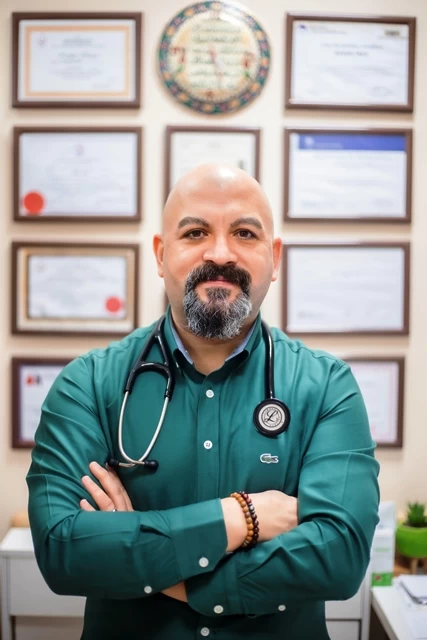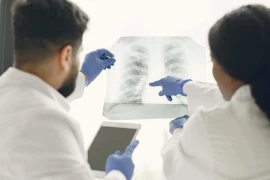
Chronic Obstructive Pulmonary Disease (COPD): New Treatment Method - Balloon Catheter Application
- Chronic Obstructive Pulmonary Disease (COPD): New Treatment Method - Balloon Catheter Application
- What are the Symptoms of COPD?
- What Causes COPD?
- Treatment Methods for COPD:
- Balloon Catheter Application in COPD:
COPD, characterized by chronic inflammation leading to narrowing of the airways, mucus plug formation, and impairment of the local immune system due to damage caused by chemical irritants (such as tobacco, mining, factory emissions, etc.), infections, and aging processes, is a reversible and treatable disease. While the progression rate is generally determined by exposure, genetic and environmental factors also play a crucial role. Globally, the most common cause of COPD is the use of tobacco and tobacco products, leading to the loss of approximately 12,000 lives daily.
What are the Symptoms of COPD?
Symptoms of COPD include cough, sputum production, shortness of breath, fatigue, wheezing, a feeling of fullness and pain in the chest, inability to perform tasks, and progressively worsening respiratory distress. The goal of COPD treatment is to alleviate symptoms, halt the progression of the disease, and prevent vital organ damage such as heart and vascular damage, brain vascular damage, liver, and kidney damage due to respiratory failure.
The fundamental principle of the human body's functioning relies on oxygen. Since COPD disrupts the transportation of O2 to cells, it can cause damage to all cells, suggesting its potential role in the development of various diseases.
What Causes COPD?
Tobacco and tobacco product use: The most common cause of COPD. Quitting smoking can sometimes be sufficient for treatment.
- Air pollution: Chemical and toxic particles in inhaled air can cause chronic irritation and COPD.
- Genetic factors: Genetic transmission is relevant in COPD. Moreover, the toxic dose exposure does not cause the same amount of damage in everyone due to genetic factors. For instance, a person consuming 2-3 packs of cigarettes daily for 10-20 years may show mild COPD symptoms, while a person smoking 3-5 cigarettes a day for 5-10 years may exhibit severe symptoms.
- Occupation: Work environments like mining, agriculture, construction, and chemical factories can create a foundation for COPD.
- Infections: Recurrent lung infections and certain viral infections are implicated.
- Asthma: In rare cases, particularly in individuals with a history of asthma, the development of COPD is observed, especially with continued smoking.
- Age: Advanced age is cited as a cause due to the weakening of lung immune system effects and slowing of tissue repair mechanisms.

Treatment Methods for COPD:
COPD is a chronically progressive disease, and its treatment is both challenging and prolonged.
- Lifestyle changes: Exercise, a diet high in protein and antioxidants, Omega-3-rich nutrition, adequate sleep, rest, and stress management are essential, as in all chronic diseases, including COPD.
- Quitting smoking: The fastest-responding method in treatment.
- Bronchodilator medications: Facilitate the expansion of airways and opening of passages.
- Corticosteroids: Indicated in the treatment of acute and chronic inflammation.
- Mucolytics and expectorants: Assist in reducing mucus (sputum) formation and facilitating the removal of existing mucus.
- Oxygen therapy: Provides support to the body's oxygen needs when respiratory failure begins to develop.
- Pulmonary rehabilitation: Used to counteract muscle loss and reduced exercise capacity in COPD, support the elimination of bronchial secretions, and make patients more mobile and active.
- Interventional procedures: Bronchial valves can be used in COPD with emphysema type. Recently, a new development in COPD, Balloon Catheter treatment, is available.
Balloon Catheter Application in COPD:
Among the interventional treatments for COPD, there is a new treatment method that can be applied through a procedure called Bronchoscopy, which is a lung endoscopy. This method can be effective in advanced COPD and chronic bronchitis types.
It aims to expand narrowed bronchi, eliminate chronic mucus secretion, and increase respiratory capacity.
First, a suitable patient for the procedure is identified. If eligible, the patient undergoes a detailed examination and is intubated under general anesthesia. The procedure is applied to all bronchial pathways accessible with a bronchoscopic balloon catheter through the intubation tube. The structure called the balloon at the tip of the catheter inflates and deflates hundreds of times per minute, essentially sanding the bronchial walls.
The success rate of balloon catheter application varies from person to person, depending on factors such as "loss of flexibility in bronchial structure, the patient's tissue renewal-healing capacity, continued tobacco use, antioxidant-rich dietary habits, etc." Depending on these parameters, an increase in lung capacity of 20-80% can be observed.

Dr. Özgür İnce
Pulmonologist





